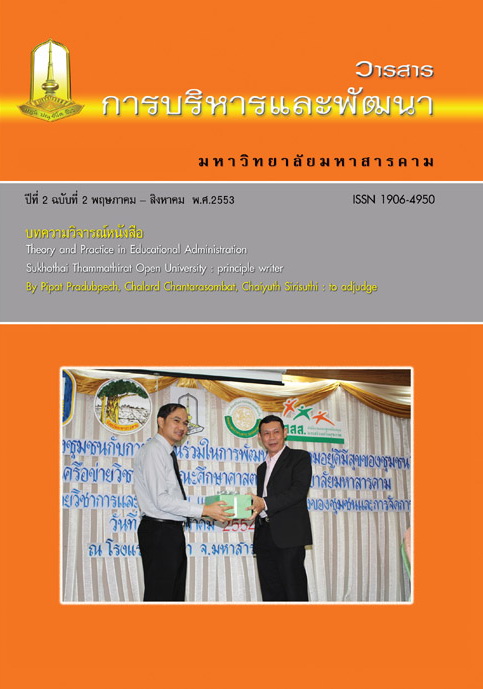การเปรียบเทีียบผลการจัดประสบการณ์ตามแนวการสอนแบบโครงการกับแบบปกติ ที่ส่งปลต่อพัฒนาการของนักเรียนชั้นอนุบาลที่ 3
Main Article Content
Abstract
การวิจัยครั้งนี้มีความมุ่งหมายเพื่อ 1) พัฒนาแผนการจัดประสบการณ์ที่มี ประสิทธิภาพตามเกณฑ์ 80/80 2) หาค่าดัชนีประสิทธิผลของแผนการจัดประสบการณ์ และ 3) เปรียบเทียบความสามารถทางร่างกาย และสติปัญญาของนักเรียนชั้นอนุบาลปีที่ 3 ระหว่างการจัดประสบการณ์ตามแนวการสอนแบบโครงการกับการจัดประสบการณ์ แบบปกติ กลุ่มตัวอย่างได้แก่ นักเรียนชั้นอนุบาลปีท่ี 3 ภาคเรียนที่ 2 ปีการศึกษา 2551 โรงเรยี นสาธติ มหาวทิ ยาลยั ราชภฏั มหาสารคาม จาํา นวน 38 คน ไดม้ าโดยการเลอื กแบบเจาะจง (Purposive Sampling) แบ่งเป็นกลุ่มทดลอง จําานวน 19 คน และแบ่งเป็นกลุ่มควบคุม
This method emphasizes and provides opportunities for children to learn according to their own idea and method to seek answers and to present their works. Children seek answers using the deeply constructed project based on their aptitudes and interests. Children practice group-work learning, practice problem-solving skills, and apply the knowledge in the daily life. The purposes of this study were to : 1) develop plans for organization of experiences with a required efficiency 80/80, 2) find out an effectiveness index of the plans for organization of experiences, and 3) compare physical and intellectual abilities of Kindergarten 3 students between organization of experiences using the project teaching approach and organization of experiences using the traditional teaching approach. The sample consisted of 38 Kindergarten 3 students at Rajabhat Maha sarakham Universtty Demonstration School in the second semester of the academic year 2008, obtained using the purposive sampling technique. They were assigned to an experimental group of 19 students and a control group of 19 students. Three types of the instruments used in this study were : plans for organization of experiences using the project teaching approach and the traditional
teaching approach which promoted physical and intellectual developments with very appropriate quality (Man = 4.48) for Kindergarten 3 students, 8 plans each ; a 20-item 3-choice picture-type test of intellectual developments with discriminating powers ranging 0.35-0.80 and a reliability of 0.85, and 2 sets of observation form on physical developments of Kindergarten 3 students as divided according to big muscle and small muscle developments. The statistics used for analyzing the collected data were percentage, mean, and standard deviation ; and t-test (Independent Samples) was employed for testing hypotheses.

